复杂度
什么是算法?
算法是用于解决特定问题的一系列的执行步骤
// 计算a和b的和
public static int plus(int a, int b){
return a + b;
}
// 计算1+2+3+...+n的和
public static int sum(int n){
int result = 0;
for(int i = 1; i <= n; i++){
result += i;
}
return result;
}
使用不同算法,解决同一个问题,效率可能相差非常大
- 比如:求第 n 个斐波那契数(fibonacci number)
如何评判一个算法的好坏?
如果单从执行效率上进行评估,可能会想到这么一种方案
-
比较不同算法对同一组输入的执行处理时间
-
这种方案也叫做:事后统计法
上述方案有比较明显的缺点
-
执行时间严重依赖硬件以及运行时各种不确定的环境因素
-
必须编写相应的测算代码
-
测试数据的选择比较难保证公正性
一般从以下维度来评估算法的优劣
-
正确性、可读性、健壮性(对不合理输入的反应能力和处理能力)
-
时间复杂度(time complexity):估算程序指令的执行次数(执行时间)
-
空间复杂度(space complexity):估算所需占用的存储空间
// 计算1+2+3+...+n的和
public static int sum1(int n){
int result = 0;
for(int i = 1; i <= n; i++){
result += i;
}
return result;
}
//计算1+2+3+...+n的和
public static int sum2(int n){
return (1 + n) * n / 2;
}
由于现在硬件发展的较好,一般情况下我们更侧重于时间复杂度。
大O表示法(Big O)
一般用大O表示法来描述复杂度,它表示的是数据规模 n 对应的复杂度
忽略常数、系数、低阶:
- 9 >> O(1)
- 2n + 3 >> O(n)
- n2 + 2n + 6 >> O(n2)
- 4n3 + 3n2 + 22n + 100 >> O(n3)
- 写法上,n3 等价于 n^3
注意:大O表示法仅仅是一种粗略的分析模型,是一种估算,能帮助我们短时间内了解一个算法的执行效率
对数阶的细节
对数阶一般省略底数
- log2n = log29 ∗ log2n
所以 log2n 、log9n 统称为 logn
常见的复杂度

O(1) < O(logn) < O(n) < O(nlogn) < O(n2 ) < O(n3 ) < O(2n ) < O(n!) < O(nn)
可以借助函数生成工具对比复杂度的大小
数据规模较小时
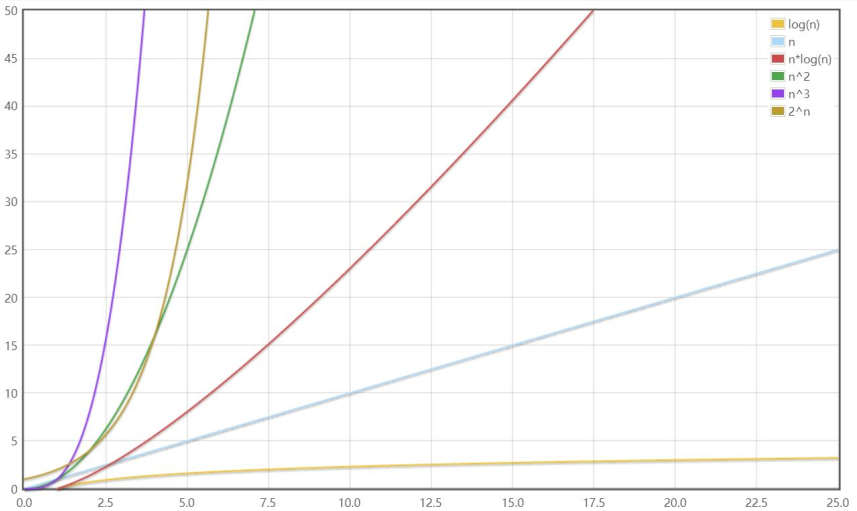
数据规模较大时

多个数据规模的情况
时间复杂度:O(n + k)
public static void test(int n, int k){
for(int i = 0; i < n; i++){
System.out.println("test");
}
for (int i = 0; i < k; i++){
System.out.println("test");
}
}
LeetCode刷题指南
首先去 https://leetcode-cn.com/ 注册一个力扣账号。
我们以力扣上一道斐波那契的题目为例,顺便分析算法的时间复杂度。
题目网址:LeetCode: 509.斐波那契数
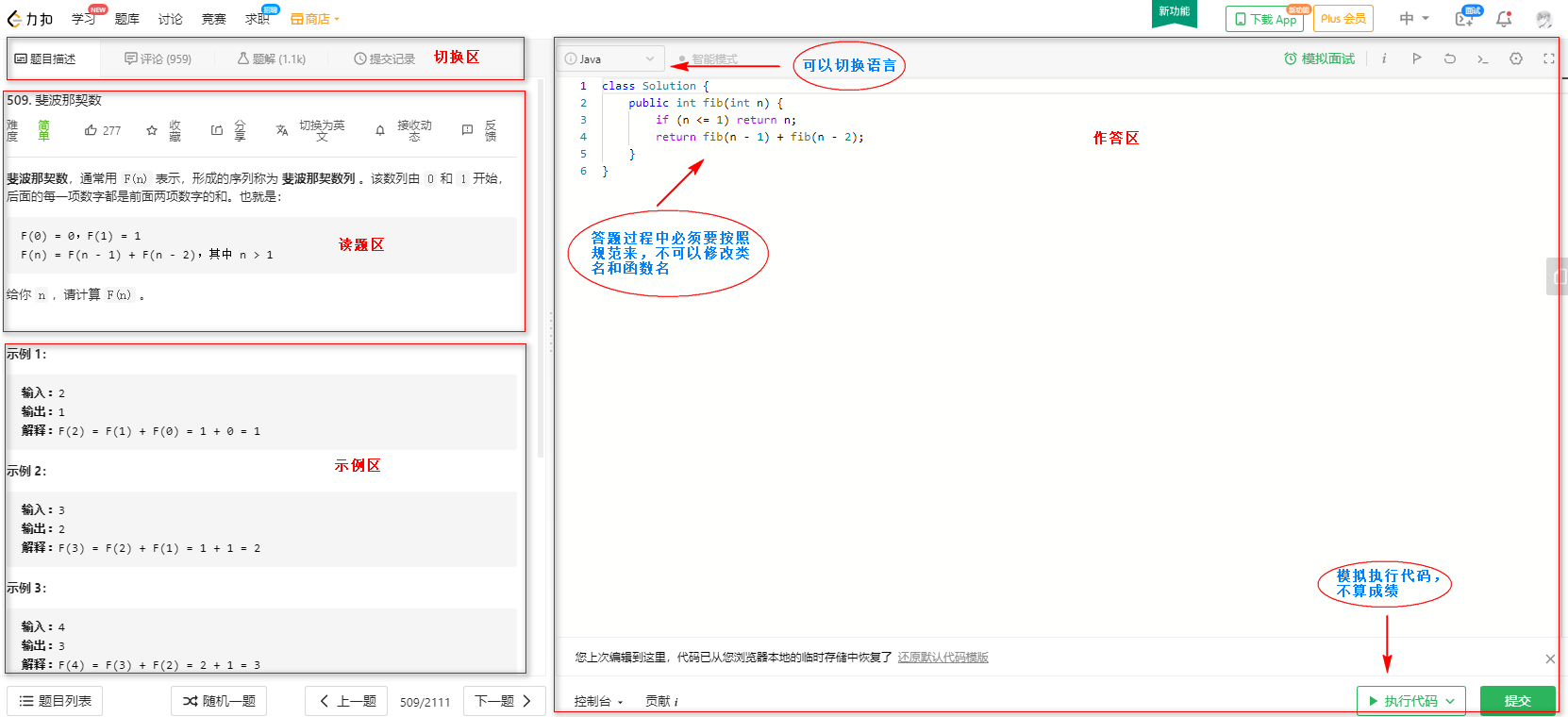
斐波那契数列复杂度分析
斐波那契数列-递归
时间复杂度为:O(2n)
public static int fib1(int n) {
if (n <= 1) return n;
return fib1(n - 1) + fib1(n - 2);
}
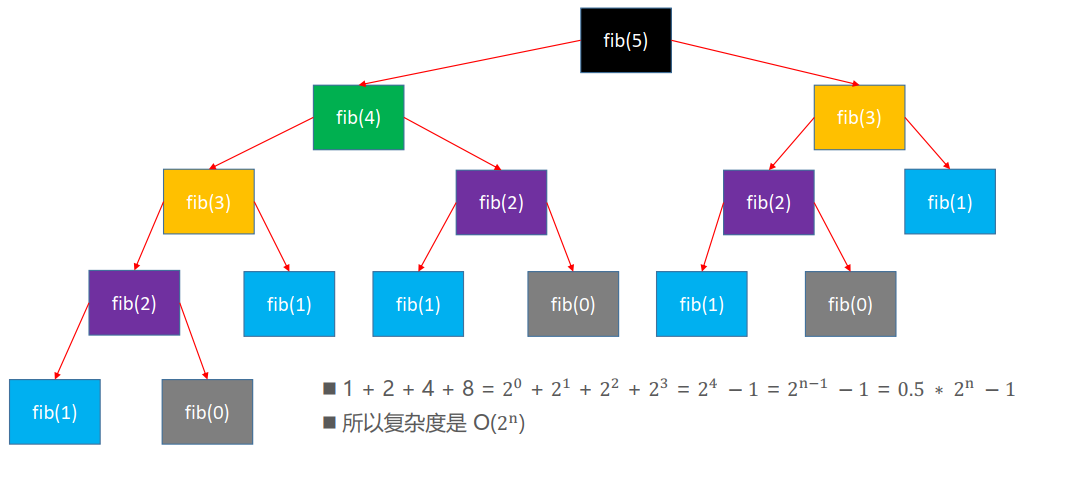
我们放到力扣上去执行一下:效率奇差无比!
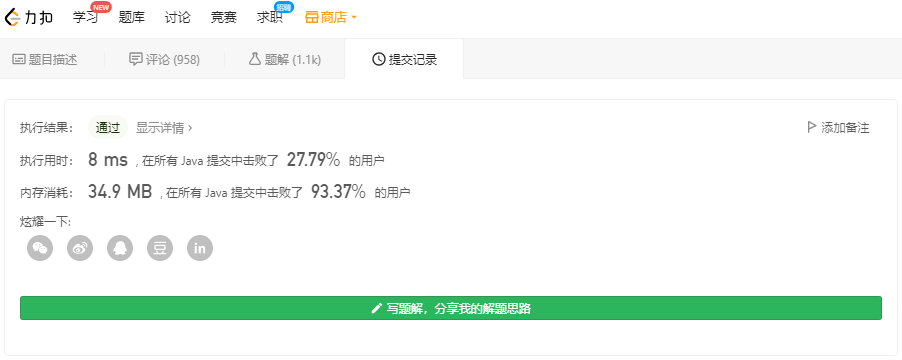
斐波那契数列-循环
不开辟任何空间,只使用循环完成
时间复杂度为:O(n)
public static int fib2(int n) {
if (n <= 1) return n;
int first = 0;
int second = 1;
// 也可以使用while循环
while (n-- > 1) {
second += first;
first = second - first;
}
return second;
}
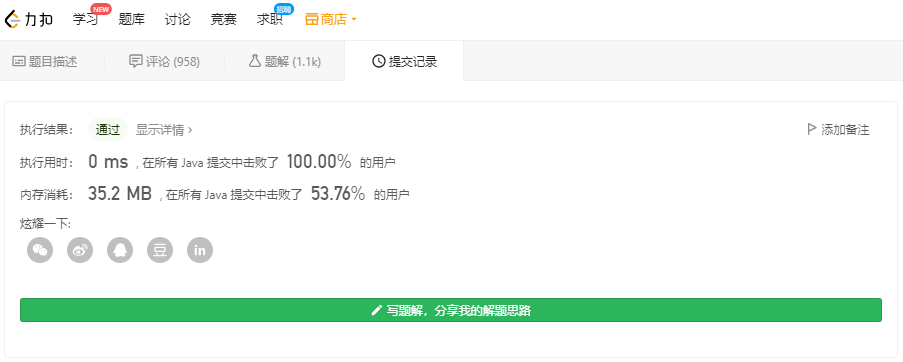
开辟新的数组空间,用空间换时间。
public static int fib3(int n){
if(n <= 1) return n;
int[] fib = new int[n+1];
fib[0] = 0;
fib[1] = 1;
for(int i = 2; i < fib.length; i++){
fib[i] = fib[i-1] + fib[i-2];
}
return fib[n];
}
在力扣上执行上面代码发现没太大区别!
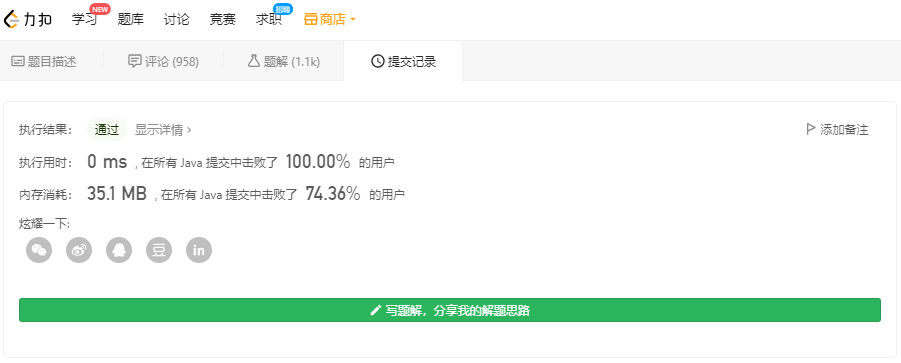
fib函数的时间复杂度分析
fib1 函数和fib2 函数的差别有多大?
如果有一台 1GHz 的普通计算机,运算速度 109 次每秒,n为64
O(n) 大约耗时 6.4 * 10-8秒
O(2n) 大约耗时 584.94年
有时候算法之间的差距,往往比硬件方面的差距还要大
斐波那契的线性代数解法 – 特征方程
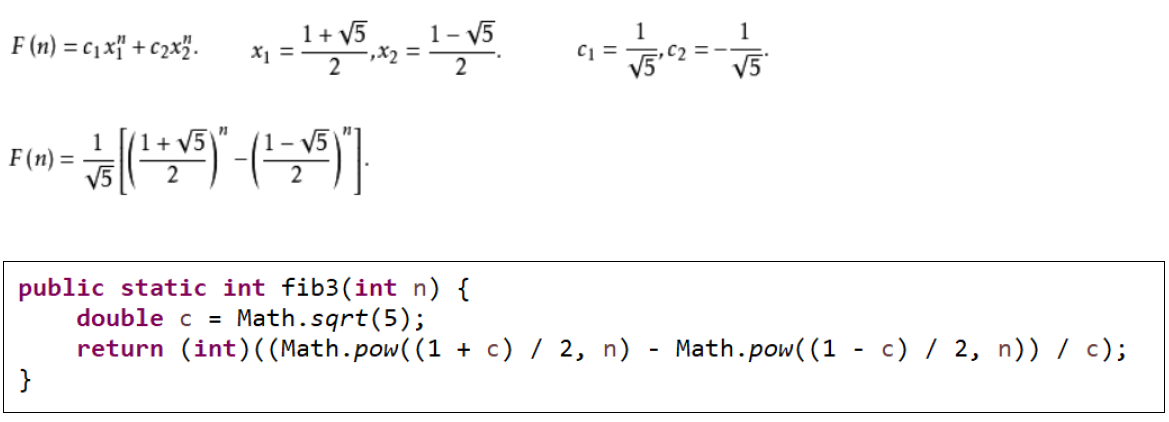
时间复杂度:视为 O(1)
算法的优化方向
用尽量少的存储空间
用尽量少的执行步骤(执行时间)
根据情况,可以
- 空间换时间
- 时间换空间